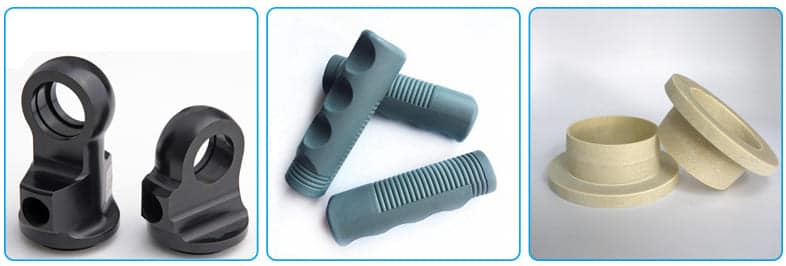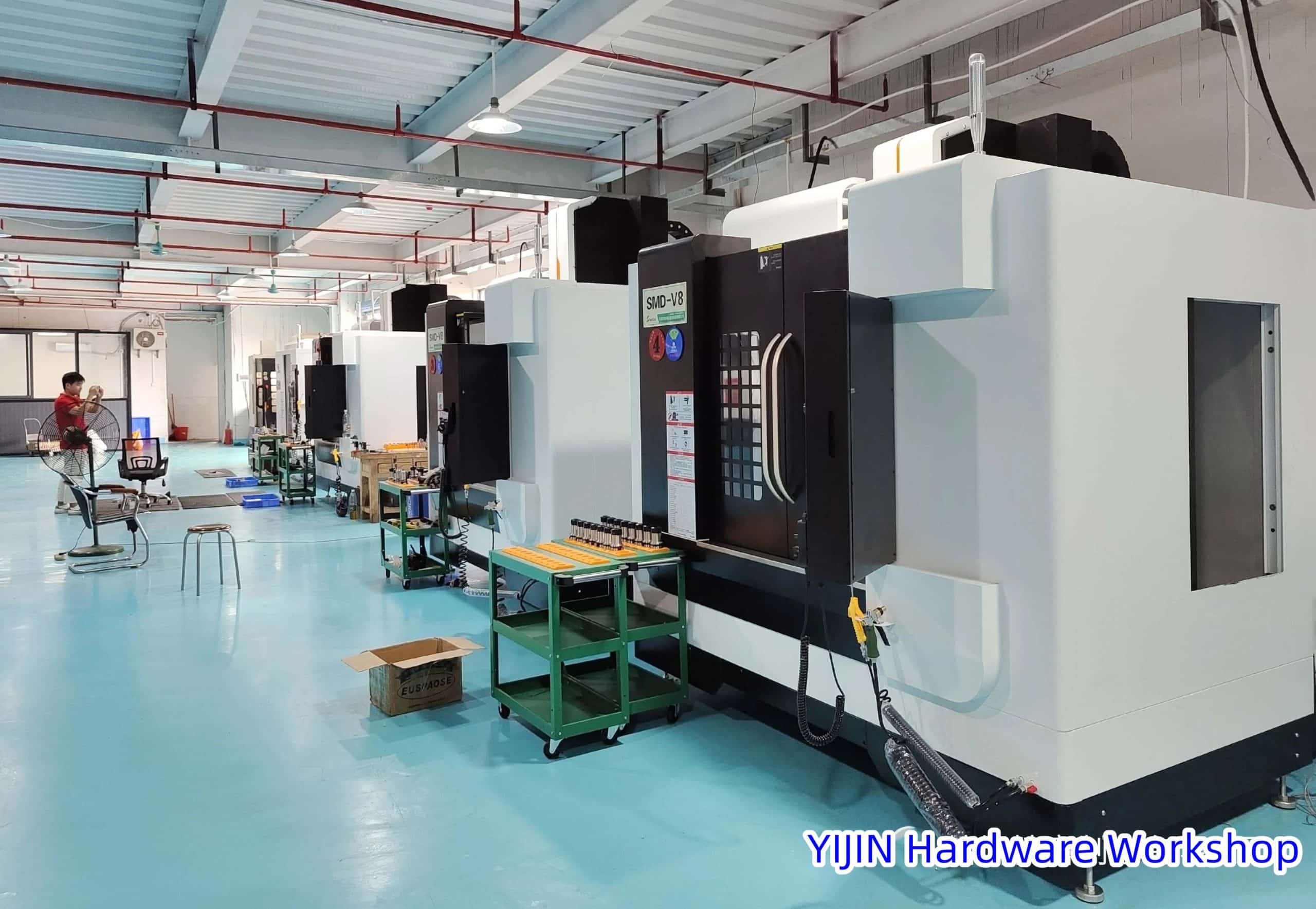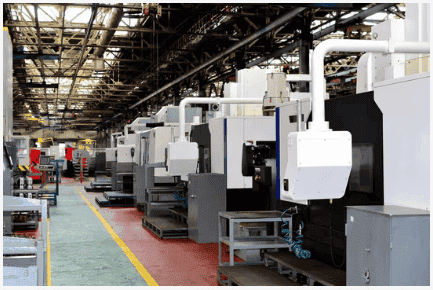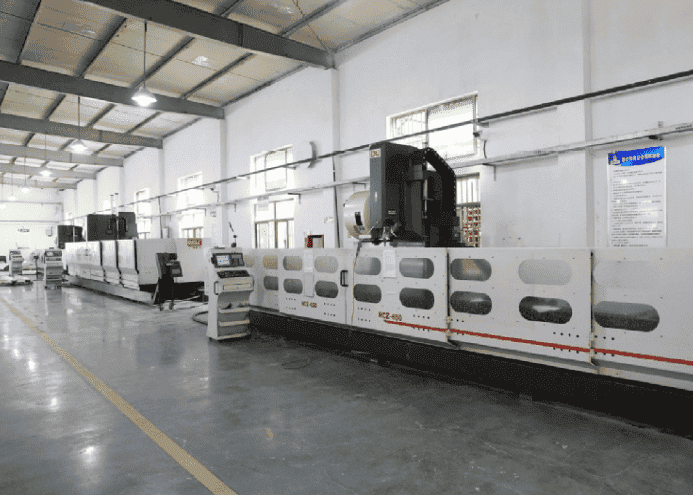Embarking on a journey to launch your own turning and milling stock business? Unsure of where to begin in this industry?
Don’t waste time, in this post, let’s follow the experience of turning and milling stock written by an experienced engineer.
What Is Turning And Milling Stock?
Delving into the realm of manufacturing, we find that plastic machining and metal manufacturing reign supreme. They are the most vital materials, thanks to their exceptional versatility.
These malleable elements can be moulded and manipulated into a plethora of various objects.
Interestingly, “raw stock” is the term often used to describe turning and milling stock prior to precise machining, as their size and shape are yet to be refined.
Turning is a process of cutting and forming raw materials into a specific shape or dimension. A lathe rotates the material while a cutting tool slices it to create the desired shape.
This process requires accuracy and precision to produce parts.
During the milling process, the raw stock is moulded into a certain shape or dimension using a milling machine.
Many swiftly rotating cutters are used by the milling machine to form and cut the material.
This process normally requires more time than turning. It can also result in pieces with complex dimensions and shapes.
Combining turning and milling results in turning and milling stock. This stock can be used to produce a variety of parts and components.
Turning and milling stock can be made from various materials, including aluminium, steel, brass, bronze, and plastic.
It is a crucial aspect of modern manufacturing. The use of turning and milling stock has significantly expanded in recent years.
The Benefits of Turning And Milling Stock
Turning and milling stock is helpful for making accurate parts and items. This method is adaptable, allowing for the creation of complex products.
It is less expensive than other machining techniques due to the use of fewer resources and tools.
Turning and milling is a quick and precise manufacturing process. Due to its speed and precision, it is suitable for a wide range of applications.
The great level of accuracy and reproducibility that can be achieved with turning and milling stock is one of the biggest advantages.
This is so that any mistakes made during the machining process are avoided. The tools used in this procedure are built to function within tight machining tolerances.

When designing components that must perfectly fit together, precision is essential. Furthermore, the technology enables the creation of complex shapes, which is not achievable with conventional techniques.
Turning and milling stock results in components with a high level of surface finish. This level of finish is important for tasks where aesthetics play a big role.
Industries such as jewellery and automotive applications rely on high-quality surface finishes. The use of turning and milling stock helps to ensure that these industries can produce visually appealing products.
Turning and milling processes produce parts with extremely tight tolerances. Precision cuts are performed throughout these processes to achieve this level of accuracy.
The resulting parts can be assembled without requiring any further alterations or adjustments.

Turning and milling stock is very resilient and can withstand significant strain and wear. These components can be used in a range of industries.
The sturdiness of turning and milling stock allows them to endure the harshest environments.
The aerospace and automotive industries require durable components for their products.
Turning and milling stock is a popular choice for producing these durable components.
Therefore, these industries often use turning and milling the stock for their parts.
The Best Ways To Turn And Mill Stock
Turning and milling stock is a necessary component of any machinist’s toolset. The stock can be used to make precision parts and components.
To achieve successful turning and milling, it is essential to use the appropriate tool and technique for the work at hand. Here are some suggestions for turning and milling stock:
Lathe Turning
Turning and milling stock on a lathe is a common practice. The stock is spun on a lathe, then the material is shaped and finished with implements like chisels and cutters.
Lathe turning enables precise, reproducible geometries and is frequently used for cylindrical items.
Milling
Another common method of turning and grinding stock is milling. Milling entails removing material from the stock using a milling machine.
The process is used to produce precise shapes and dimensions.
Milling is frequently used for manufacturing larger parts and components. This is because it offers better final product control than lathe turning.
Grinding
Turning and milling stock commonly involves grinding. In order to shape or apply finishes to the stock, the material must be removed from its surface using an abrasive wheel.
When accuracy is crucial, complicated shapes are frequently ground.
Drilling
Discover the exciting process of drilling. It is a dynamic technique employed to craft intricate holes and features within stock material.
At the heart of this method lies the powerful drill bit, fearlessly carving a path for fasteners and more.
In the pursuit of perfection, the artistry of drilling often joins forces with other turning and milling methods.
This culminates in the most complex and captivating shapes and parts imaginable.
Selecting the ideal turning and milling approach for your work depends on factors such as size and precision.
With the right equipment and techniques, you can transform any material into high-quality parts.

Safety is paramount when operating with potent apparatus, and protective gear is essential to ward off hazards.
Ensure a sturdy and stable workbench sets the stage for your machining endeavours.
Moreover, before commencing any process, carefully read the directions that are included with each tool.
Knowing the basics of machining may simplify the process and guarantee that you get the results you want.
Anybody can master turning and milling stock with careful planning, flawless execution, and the necessary safety precautions.
The Different Types of Turning And Milling Stock
The materials used to turn and grind stock are varied. There are different turning and milling processes.
Different materials are used for these processes as each material holds different characteristics.
Knowing the core traits of different stocks will help you to choose the right one for your project. We have added some of them below:
Aluminium
If you are in need of accuracy and strength, we strongly suggest you go with aluminium.
It is a lightweight material and its corrosion-resistant properties make it ideal for making intricate and accurate parts.
Learn More: How To Choose Reliable Chinese Aluminium CNC Machining Suppliers?

Brass
Talking brass is indeed a malleable and strong material. You can use it for complex patterns.
In the case of electrical and automotive applications, this material is used due to its durability and strength.

Stainless Steel
Embrace the powerhouse of stainless steel. It has exceptional strength and resistance to corrosion, making it the go-to choice for outdoor settings.
Enjoy its low thermal expansion. It has remarkable benefits for precise products and vital medical instruments.
Learn More: CNC Machining For Stainless Steel Parts

Titanium
Titanium is one of the toughest metals in the modern world. It is known for its sheer resilience. It has impeccable heat resistance.
Because of these properties, titanium is the ideal choice for high-stress environments.
Industries rely on high-stress components, such as aerospace and medical fields. They often choose titanium for its durability and strength.
Learn More: CNC Machining For Titanium Parts

Plastic
Plastic is a flexible material. It is also lightweight. It is a brilliant option for components that require adaptability. This adaptability is particularly useful in extreme temperatures.
Choosing plastic as a material can provide several advantages. It is an excellent option for components that must be able to withstand extremely high temperatures.
Wood
One of the first turning and milling stock materials is made of wood. It comes in many different species, each with special qualities of its own.
Wood is ideal for complicated designs since it is simple to mould and work with.
Learn More: What Are CNC Wood Turning Services?
Before starting your project, you need to comprehend the characteristics of the turning-milling stock.
By doing so, you may make sure that you select the appropriate material for your purposes.
Safety should always come first while working with any kind of turning or milling stock.
While working on projects that include sharp edges or strong machinery, put on protective gear like gloves.
You also need safety glasses. You need to make sure that all cutting blades are sharp and in good condition.
It is crucial to heed any cautions or directions offered by the maker of the equipment or item being utilised.
These recommendations will help prevent potential mishaps while assuring good outcomes.
Finally, remember that utilising lathes and mills requires practice. It also requires persistence and commitment. It will enable you to develop your abilities over time.
Choose The Right Turning And Milling Stock For Your Project
Top manufacturing industries prefer turning and milling processes. They prefer it for producing high-quality products and components.
The quality of turning and milling stock is essential to meet necessary requirements.
Using high-quality stock is crucial to achieving the desired level of precision. Without proper stock, the turning and milling processes may not yield the desired results.
If you are unfamiliar with this process, you might face difficulties in choosing the right turning and milling stock.
Selecting the appropriate materials matters the most if you want to get the true taste of success in this field.
Now, there are different factors that you need to consider in this regard. These include:
Shape & Size
One of the key factors is choosing the right size and shape of the stock that will be used for turning and milling.
When manufacturing a finished good, you need to ensure that the stock has enough space. It is used to accommodate.
The stock should also be in a configuration that matches the final shape of the part or item being produced. This will facilitate minimising material waste and speed up machining.
Machinability
The machinability of the material should be considered. Machinability refers to the material’s ability to be cut, and drilled. It is shaped during the turning and milling processes.
Materials with high machinability are easier to work with. High machinability can speed up milling, leading to cost savings.
Cost
One further important consideration is the cost of the turning and milling stock. Choose a material that is economical and matches your budget.
However, bear in mind that cheaper materials might not always be the ideal choice. They could not have the right properties or machinability for your project.
Similarities Between Turning And Milling
Turning and milling are popular industrial processes in the manufacturing sector. Both processes involve the use of machines to cut materials.
These processes are excellent for creating parts due to their specific traits. Turning and milling are ideal for precision work and shaping materials due to their specific traits.
These processes have revolutionized the manufacturing industry. They make it easier to produce parts and products.
They continue to be critical for creating various parts and products in a range of industries. It includes aerospace, automotive, and medical.

The ability to produce complex shapes and designs using turning and milling has made it possible to manufacture products.
Explore the world of lathes and drills, which are important tools for precision moulding. They are also important for the sizing of materials. These machines are versatile.
It can perform well in both processes, despite differences in speed and power. Discover the similarities in material management between milling and turning.
Embark on a journey of intrigue and fascination.
The processes require smooth transportation between machines. This enhances the efficiency of creating high-quality parts and components. The similarities between these processes provide a better understanding.
You will get concrete knowledge of techniques and technologies. It drives the manufacturing industry. Studying these machines and processes can result in innovations.
Moreover, you will have a good knowledge of manufacturing techniques and technologies.
Lathes and drills are critical tools. They are essential to driving progress in the manufacturing industry. The use of these tools is necessary for precision work and shaping of materials.
The manufacturing industry continues to evolve. The importance of lathes and drills will continue to grow.
An array of specialized cutting instruments is necessary for procedures. These instruments include taps, chamfers, and end mills.
The use of these instruments ensures precision and perfection in each machined component.
Specialized cutting instruments play a critical role in achieving the desired outcome. These versatile tools serve unique purposes and are adeptly employed for either process.
Not to mention that both processes require cutting the components to exact measurements.
To achieve a perfect fit during assembly, each component must be precisely and accurately machined.
Furthermore, every component is produced in accordance with the highest standards.
There are numerous parallels between turning and milling. Both procedures require the movement of material between machines.
Both procedures use various cutting tool types. Both procedures produce precisely sized and shaped pieces.
Understanding these parallels can help you select the appropriate procedure for your project. You should consider these similarities when deciding which procedure to use.
Conclusion
The industrial sector relies on two key processes. These processes shape and convert raw materials into finished products.
The two processes are turning and milling stock. Both procedures involve the exact removal of material to produce precise shapes and sizes. However, their methods and equipment are different.
To create high-quality and priced components, manufacturers need to know the differences. They also need to know the benefits of each manufacturing process.
Turning and milling are important techniques for modern manufacturing. It can enhance productivity and efficiency. It requires the right tools and skilled operators.
Choosing the right turning and milling stock can transform your experience, whether you’re a beginner or a pro.
Selecting the ideal stock that complements your craftsmanship can enhance safety and performance.
 Call Us Today! (+86) 188-2253-7569
Call Us Today! (+86) 188-2253-7569



